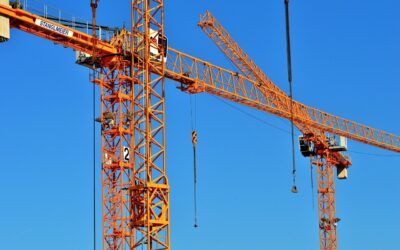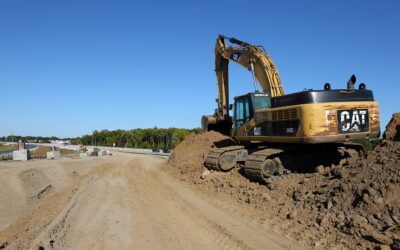There are several types of bond options that government officials can use to secure funding for major capital projects. Each of the different options balance repayment security, funding sources, and investor risk. It’s important to understand the different types of bonds because the funding they generate each year supports thousands of new projects that require private sector partnerships.
General Obligation bonds (GO) are traditional and very secure because they are backed by the issuer’s full faith, credit, and taxing authority. In many states they require voter approval. Capital outlay GO bonds are used specifically for facilities and infrastructure and usually carry the same election requirement. Revenue bonds are paid from project-related income—such as tolls, utility charges, or transit fares—so investor risk is more closely tied to project performance, and these bonds generally do not require an election.
Other bond structures add flexibility. Special tax bonds pledge a designated type of tax and whether voter approval is needed depends on the state. Tax Increment Financing (TIF) bonds are commonly issued as special obligations repaid from the growth in property tax.
There are other funding options as well. Legislative bodies appropriate funding, the federal budget allocates project funding and private sector investment in public projects has become common.
Members of the SPI Research Team and Government Marketing News Team spend a great deal of time digging through dozens of public information sources to identify upcoming projects. By researching bond funding, budgets and planning documents, the team can point companies to upcoming opportunities long before projects are announced. Outlined below are examples of recently identified upcoming projects which will be funded by bond approvals.
Montana does not have a fixed statewide schedule for all bond elections like most other states and several upcoming bond elections are scheduled through the end of 2025. However, voters in Montana have already approved $1.7 billion in bond funding for various types of projects.
One bond election in Helena, Montana approved $283 million in funding to rebuild and modernize aging education facilities in the Helena School District. A new high school will be constructed, and significant renovations will be made to another high school building. Planned improvements include new HVAC, electrical, and plumbing systems, enhanced safety and security, renovated labs and technical education spaces, and additional capacity to meet future enrollment projections. Another $43 million was approved to fund a new Kessler Elementary School. The replacement building will include upgraded classrooms, energy-efficient systems, a gymnasium, multipurpose spaces, and a kitchen. Officials plan to procure construction services in July 2026.
In Michigan, local jurisdictions can hold bond elections on four potential dates each year. The state’s next bond elections in Michigan will be held November 4th, and the November elections are almost always the largest funding allocations that are approved throughout the country. Voters in Michigan have already approved approximately $819 million in bond measures so far this year.
Approximately $120 million was approved by voters in the city of Novi to replace aging police and fire stations with modern, purpose-built facilities. Voters also approved funding for the construction of a centralized public safety headquarters, two new fire stations, and some roadway improvements.
The largest funding allocation from a recent Michigan bond election provides $91.85 million to co-locate a police station and fire station in a new 78,500-square-foot public safety facility. This consolidated headquarters will provide state-of-the-art technology, expanded training areas, and co-ed quarters for officers.
Additional bond funding will provide $13.15 million for a new 14,500-square-foot fire station in north Novi, $13 million for a similar-sized fire
station in the southeast area, and $2 million for site improvements. Included in the project will also be the extension of a road to deliver a more direct route for emergency vehicles. Construction is expected to begin in 2026 following final design and procurement.
Oklahoma’s bond elections are scheduled on statutory dates by the State Election Board. Seven bond elections have already been held, and three more are scheduled before the end of 2025. To date, Oklahoma voters have approved approximately $960 million in funding for upcoming projects. In September this year, voters in the Tahlequah Public Schools district approved $51.3 million to support students and modernize facilities. One upcoming project will include improvements to both middle and high school facilities as well as two elementary schools and the Sequoyah Early Childhood Center. A new football field will be constructed for Tahlequah High School and most instructional technology will be upgraded.
Another project funded by the bond election provides $49,435,000 to improve facilities and technology on other campuses and still another project, with an estimated cost of $1,875,000 will call for new transportation purchases. RFQs for architectural design and construction management will be released in late 2025 and formal construction solicitations will follow. Construction is slated for mid- to late 2026.
In Texas, bond elections are held in May and November annually. To date Texas voters have approved funding of more than $14.9 billion and the next scheduled bond elections will be held on November 4, 2025. The Hays County Commissioners Court in San Marcos has approved $240 million in Certificates of Obligation (COs) to fund transportation projects across the county. Unlike general obligation bonds, COs can be issued without voter approval.
This funding will provide for planning, right-of-way acquisition, and construction for approximately thirty road improvements in four county precincts. The improvements will improve safety, capacity, and regional connectivity in rapidly expanding corridors that serve Buda, Kyle, Dripping Springs, Wimberley, and unincorporated areas. Hays County Commissioners plan to release solicitations and award phased construction
packages over 12 to 24 months to solicit architectural, engineering, and right-of-way services. Based on design readiness, right-of-way, and market conditions, construction services are anticipated to start as soon as packages are ready in mid- to late-2026.
By researching public information sources, it is possible to identify upcoming projects that will be launched in the future. Bond elections are only one of the many sources of great intel related to public/private sector collaboration opportunities. Without the research most interested parties will not be aware of the contracting opportunity until much later when public announcements are made related to the release of solicitation documents.
Some state Departments of Transportation will move slower than usual by launching large roadway projects because of the tariffs which have driven project costs up. However, there appears to be little slowdown in local government spending plans and the resulting contracting opportunities.
Photo by Edmond Dantès from Pexels







